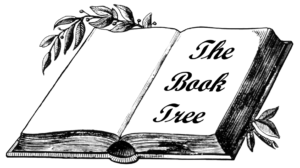The provocative nature of Zecharia Sitchin’swork enlarges the scope of our understandings of ancient civilization by addressing the when, how, why and from where it originated. Once exposed to Sitchin’s explanations, our way of understanding ancient history changes significantly. Most importantly, the Sitchin material leaves us with a wide array of implications for the future.
The Sitchin information shakes up what we previously learned about the origins of religion, re-defines our understanding of the origins of the human species, and explains how early Earth inhabitants were guided to develop and implement the elements of civilization on this planet. In other words, Sitchin’s work sets out a new explanatory framework that shapes our perceptions and gives us a much broader way of making meaning. This is what we here identify as the Sitchin paradigm. The Sitchin paradigm clearly indicates that Earth was a “visited” planet that was “seeded” and culturally cultivated by other terrestrial (OT) expertise. 61 In other words, the elements of civilization were inserted.
The provocative nature of Zecharia Sitchin’s work enlarges the scope of our understandings of ancient civilization by addressing the when, how, why and from where it originated. Once exposed to Sitchin’s explanations, our way of understanding ancient history changes significantly. Most importantly, the Sitchin material leaves us with a wide array of implications for the future. The Sitchin information shakes up what we previously learned about the origins of religion, re-defines our understanding of the origins of the human species, and explains how early Earth inhabitants were guided to develop and implement the elements of civilization on this planet. In other words, Sitchin’s work sets out a new explanatory framework that shapes our perceptions and gives us a much broader way of making meaning. This is what we here identify as the Sitchin paradigm. The Sitchin paradigm clearly indicates that Earth was a “visited” planet that was “seeded” and culturally cultivated by other terrestrial (OT) expertise. In other words, the elements of civilization were inserted.
The explanatory information in place before Sitchin’s work was published, implies that the components of early civilization came about through the inventiveness of the first humans who came to live in Mesopotamia. According to anthropologists, early man roamed the Earth, and engaged in hunting and gathering activities. Most early scientific explanations imply that early peoples learned several important complicated civilizing constructs by such processes as “independent invention” and “trial and error.” According to Sitchin‘s work, these explanations cannot be the explanations that apply to Sumer. Learning of complex structures needs either models (to promote learning by imitation), or direct instruction.
Under the Sitchin paradigm, not only did the OTs give the constructs of civilization to the Sumerians, they taught those people skills and knowledge that emerged as fields of study: agriculture, hydrology, construction, architecture and astronomy. We do not want to imply here that the Sumerian people were not intelligent, inventive, skilled, or industrious. In fact, they became the scribes who set down the Anunnaki stories on wet clay so they obviously were literate in the cuneiform script and language. They also recorded stories given them on thousands of clay tablets, including copious commercial transactions. They built settlements; they built palaces; they fashioned sculptures and what we now call artifacts (like the cylinder seals). They worked in metals; and perhaps (under Anunnaki direction) even built a spaceport and a landing platform for their space traveling ventures.
Certainly Sitchin’s well researched explanations are unprecedented when compared to what has been known and taught for years. Look at the outstanding features of Sitchin’s contribution: he identified another planet that belongs to our solar system, the home world of technologically advanced beings that explored and colonized Earth and built settlements in Mesopotamia. Sitchin also tells us that it was these space travelers who genetically engineered a new species. He identified evidence that these OTs held advanced technological knowledge that, for example, facilitated their use of space vehicles to remotely monitor Earth for gold deposits, a substance they needed to save their home planet’s diminishing atmosphere. His explorations of ancient sites proved that these OTs built launch sites from which to transship the gold they mined here. All these achievements were uncovered by Sitchin’s extensive research efforts.
Perhaps the most provocative component of Sitchin’s material is the evidence indicating that these space travelers genetically engineered humans by “blending” the genes of one of their males with those of an existing female hominid. This certainly is a provocatively different explanation of human origins that was unprecedented, to say the least. The concept of genetic engineering served, according to Sitchin’s information, to “jump-start” the development of human beings who were intelligent.
Zecharia with statue of mother goddess, Ninhursag, at Aleppo Museum, Syria. She and Enki, according to Sitchin, supervised the genetic alterations of man. photo courtesy of Wally Motloch
Only in the late 20th century does modern science allow us to appreciate the concept of genetic engineering. In the ancient Sumerian text called Atrahasis, Sitchin found the ancient evidence of this concept, and an ancient cylinder seal found among hundreds of these clay records attests to the existence of a laboratory. Many – if not most – of these developments likely would not even have been recognizable, let alone understood, by the early tablet redactors. From Sitchin’s boldness in setting out coherent explanations of these contributions of the Anunnaki, we find the evidence that (in Sitchin’s words), gives us the ability to appreciate that “modern science is catching up with ancient knowledge.”


